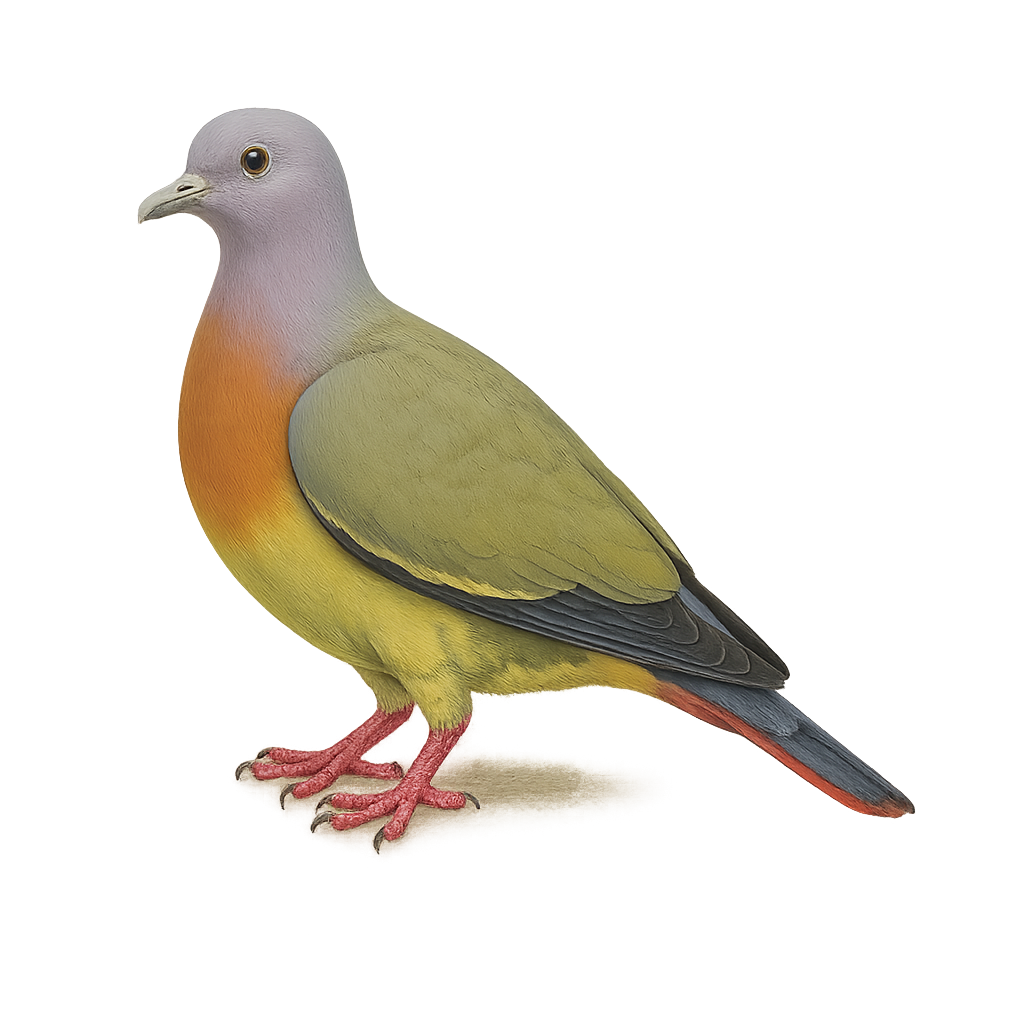Your wildlife photography guide.
Explore the pink-necked green pigeon in detail, study its behavior, prepare your shots.
Where to observe and photograph the pink-necked green pigeon in the wild
Learn where and when to spot the pink-necked green pigeon in the wild, how to identify the species based on distinctive features, and what natural environments it inhabits. The WildlifePhotographer app offers tailored photography tips that reflect the pink-necked green pigeon’s behavior, helping you capture better wildlife images. Explore the full species profile for key information including description, habitat, active periods, and approach techniques.
Pink-necked Green Pigeon
Scientific name: Treron vernans

IUCN Status: Least Concern
Family: COLUMBIDAE
Group: Birds
Sensitivity to human approach: Suspicious
Minimum approach distance: 10 m
Courtship display: April to May
Incubation: 17-19 jours
Hatchings: April to June
Habitat:
Tropical forests, mangroves, urban areas
Activity period :
Primarily active during the day, with peak activity in the morning and late afternoon.
Identification and description:
The Pink-necked Green Pigeon, scientifically known as Treron vernans, is a vibrant and fascinating bird native to Southeast Asia. This pigeon is notable for its colorful plumage, with males displaying a distinctive pink chest and shades of green and yellow across the body. Females are more subdued in color, predominantly green. These birds favor forested habitats and urban areas with dense vegetation. They primarily feed on fruits and play a crucial role in seed dispersal. Their flight is swift and direct, often in small flocks. Although generally not very shy, they can be cautious when threatened.
Recommended lens:
400 mm – adjust based on distance, desired framing (portrait or habitat), and approach conditions.
Photography tips:
To photograph the Pink-necked Green Pigeon, focus on areas where they feed, such as fruit trees. Use a 400mm or longer telephoto lens to capture details without disturbing them. Natural morning or afternoon light is ideal to highlight the vibrant colors of their plumage. Be patient and discreet to avoid scaring them away.
The WildlifePhotographer App is coming soon!
Be the first to explore the best nature spots, track rutting seasons, log your observations, and observe more wildlife.
Already 1 432 wildlife lovers subscribed worldwide

